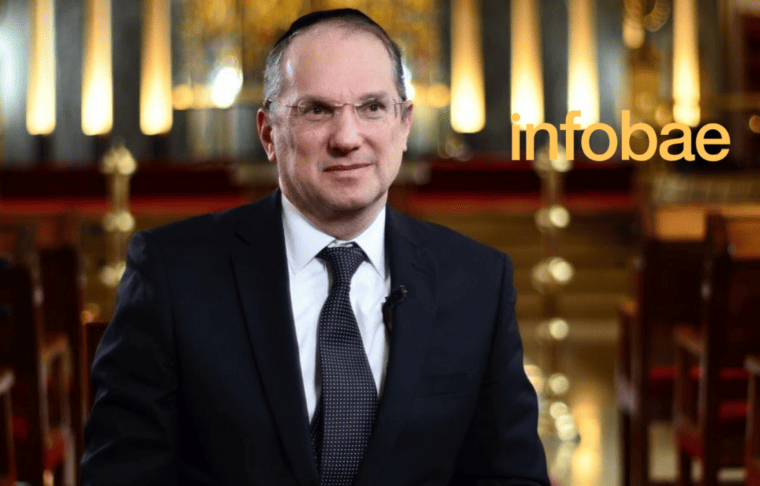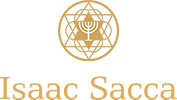Rosh Hashanah: the traditions of the Jewish community to celebrate the arrival of the New Year

The community celebrates the arrival of the year 5784 of its calendar. The execution of the Shofar is the main fulfillment that must be carried out within the framework of this celebration. It is a simple and primitive instrument, made from the horn of a ram. The reflections of two rabbis on the subject.
Rosh Hashanah, also known as Yom Hadin (Day of Judgment), refers to the moment in which the world was created. It evokes the creation of Adam and Eve, the first man and first woman. Based on this, prayers are made for the happiness of the human race and for universal peace.
Rosh Hashanah is the holiday that celebrates the Jewish New Year and will begin with the first star in the afternoon this Friday, September 15, until the afternoon of Sunday 17, when the celebration will end. During this time, Jews carry out a moment of meditation and introspection to be able to examine themselves, take stock of the acts and actions carried out and rectify themselves through prayers of repentance. The blowing of the Shofar is the most important moment in this holiday. It symbolizes the clamor of the Jewish people to God recognizing Him as Creator and Eternal King.
This year, the community celebrates year 5784 on its calendar. Rosh Hashanah (meaning “Head of the Year”) is one of the most important days in the Jewish calendar and begins on the 1st of Tishrei. This day we assess the past year and we plan the events for the coming year.
Rosh Hashanah, also known as Yom Hadin (Day of Judgment), refers to the moment in which the world was created. It evokes the creation of Adam and Eve, the first man and first woman. Based on this, prayers are made for the happiness of the human race and for universal peace.
Rabbi Isaac Sacca explains the Jewish holiday
The 1st of Tishrei is the first day of a new year and marks the beginning of a ten-day period (Aseret Yemei Teshuvah). It is a time of self-examination and spiritual contrition. It is a time in which God calls to get rid of vices and prejudices, to get rid of what does not correspond and hinders the path that leads to Him and to be able to rectify ourselves and live according to His law. This period culminates on Yom Kippur, the Day of Atonement.
Rosh Hashanah celebrates the free man, the one who feels morally responsible not only for what he did, but also for what he failed to do. It is a turning point between the year that passed and the guilt we atone for, and the year to come with the hope of being able to improve.
Rabbi Tzvi Grunblatt explains the keys to the Jewish New Year
The execution of the Shofar is the main fulfillment that must be carried out within the framework of this celebration. The Shofar is a simple and primitive instrument, made from the horn of a ram, recalling the ram that Abraham sacrificed in place of his son Isaac, after having been willing to kill his own son.
The Shofar is blown during the morning prayer and symbolizes a call to repentance. That is why the sound should resemble that of crying; it is God who “cries” for the human being who remains far from the path that leads to Him and for the potential that men carry within and that He waits to be brought to light. Likewise, it is a cry that man makes to return to God that cannot be expressed in words.
The mitzvah of the shofar, the sounds that are emitted are “Tekiah” (a long and fixed sound) first, then the “Shevarim” or “Truah” (break) or both together, and again a Tekiah (Katu Ph)
In the same way, the “Shofarot” (sounding of the Shofar) liberates from the submission of the past and gives hope to begin a “new life” in the year that begins. The word “Shofar” comes from the Hebrew word “Leshaper” which means “to improve.”
The mitzvah of the Shofar, the sounds that are made, are “Tekiah” (a long, fixed sound) first, then the “Shevarim” or “Truah” (breaking) or both together, and again a Tekiah. These same sounds were those emitted in the desert when the Jewish people were notified that the camp of Israel was continuing its journey. The Tekiah summons a place, the Truah speaks of dismounting and the last Tekiah speaks of the new place to which it is moved (with spiritual significance).
During the Rosh Hashanah celebrations, we eat apple-based foods with honey to symbolize the longing for a sweet year, and other special foods that symbolize the blessings of the New Year.
We also greet each other with the renowned “Shanah Tovah”, which expresses the wish that the coming year will be a prosperous one and we bless each other with the words “L’shanah tovah tikatev v’tichatemee” whose meaning is “May you be enrolled and sealed for a good year.”
As with each of the major Jewish holidays, after lighting the candles and praying, the Kiddush (a blessing) is recited and a blessing is said before eating the challah (braided bread consumed on these holidays).
In that sense, Rabbi Eliahu Hamra, President of the Federation of Argentine Jewish Communities, left his Rosh Hashanah message: “When people looks around, they discover that most of their time and energies are directed toward satisfying their physical needs. They also see that the number of people who focus on spirituality is small compared to people immersed in materiality. This can raise doubts and can lead us to think: perhaps the physical self is the essence of life.”
Rabbi Hamra continues: “Rosh Hashanah teaches us the opposite: the spiritual self is the main thing. Therefore, although in the six days of creation a great and vast world was called into existence, it was all considered insignificant until man was created. Only when man was created can it be said: ‘This is the day of the beginning of Your creation.’ The true beginning took place when man recognized the Almighty as king over all creation and discovered its divine origin in it.”

